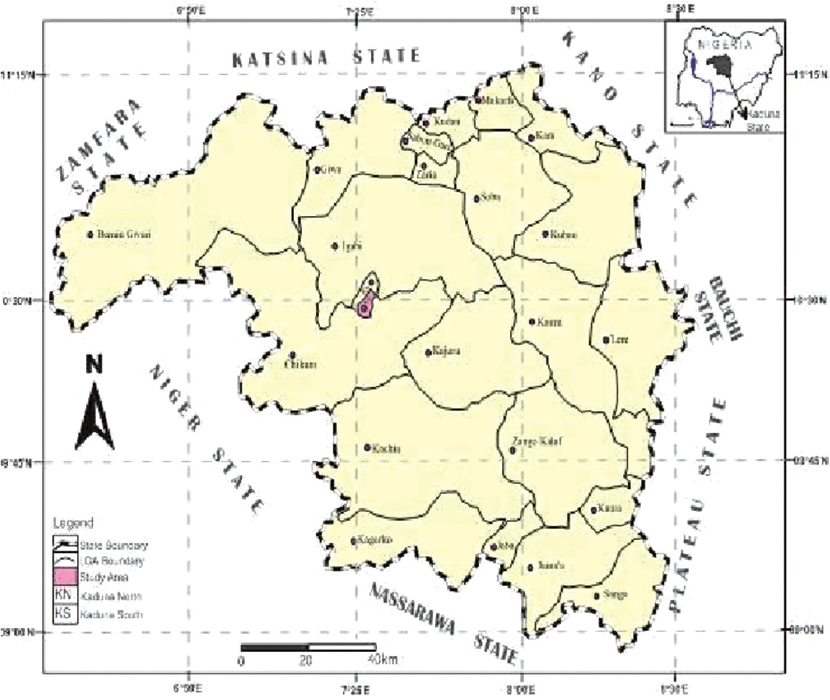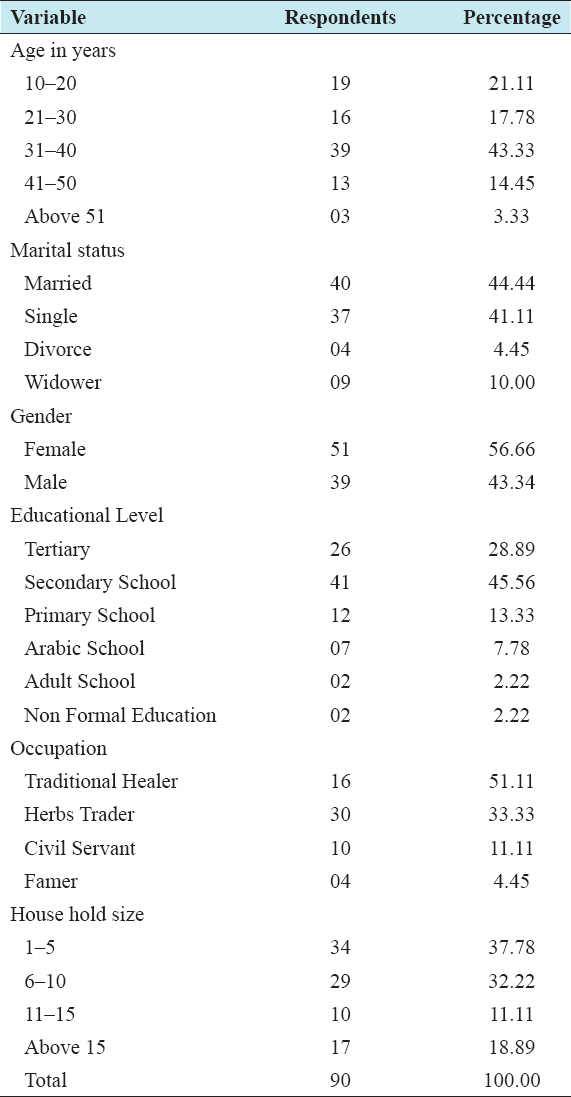Medicinal Utilization and Phytochemical Composition of Brimstone (Morinda lucida. Benth) Tree: A Case Study of Igabi Local Government in Northern Guinea Savanna Area of Kaduna State, Nigeria
A. I. Sodimu1*, M. M. Olorukooba2, G. O. Baba3, A. A. Ademuwagun4, R. K. Olaifa5, M. F. Rasheed4, L. O. Salau1, K. Musa1, M. I. Bello6
1Department of Forest Ecology and Environmental Management, Savannah Forestry Research Station, Forestry Research Institute of Nigeria, P.M.B 1039, Samaru-Zaria, Nigeria, 2Department of Crop Protection Technology, Federal College of Forestry Mechanization, Forestry Research Institute of Nigeria, PMB2273, Afaka-Kaduna, Nigeria, 3Department of Forest Protection and Entomology, Savannah Forestry Research Station, Forestry Research Institute of Nigeria, P.M.B 1039, Samaru-Zaria, Nigeria, 4Department of Basic Science and General Studies, Federal College of Forestry Mechanization, Forestry Research Institute of Nigeria, PMB2273, Afaka-Kaduna, Nigeria, 5Department of Forest Economics, Extension and Management, Savannah Forestry Research Station, Forestry Research Institute of Nigeria, P.M.B 1039, Samaru-Zaria, Nigeria, 6Department of Forest Protection, Shelterbelt Research Station, Forestry Research Institute of Nigeria, Kano, Nigeria
ABSTRACT
Morinda lucida. Benth is known for its essential constituents required for good health of humans and arrays of indigenous uses, pharmacological and arrays of indigenous uses, pharmacological, and phyto-pharmacologicals for the treatments and prevention of several ailments and medical conditions. Hence, the study is aimed at documenting and unraveling the Medicinal utilization and phytochemical composition of Brimstone (M. lucida. Benth.) plant in Igabi Northern Guinea Savanna area of Kaduna State was studied. One hundred questionnaires were randomly administered to the respondents (Traditional healers; Herb traders, Civil servants and farmers) and a total of 90 were retrieved. The results revealed that the plant parts (leaves; bark; and the roots) can be used in the treatment and prevention of various diseases such as yellow fever; abdomen or chest pain; infertility; cancer; gonorrhea; leprosy; kidney and liver dysfunction, hernia; sexual problems; rheumatism; and so on. Infusion is the major (43.33%) method of herbal preparation. Parts of the plants species used in preparing the herbs include: The leaves; bark; and the root. Majority of the herbal are consumed in a fresh form. Demographic characteristic of the respondents was also examined. The percentage of Male was (43.34%) while that of their female counter part was (56.66%). Majority (43.33%) of the respondents were between 31 and 40 years’ age bracket and majority (44.44%) are married with majority (37.78%) having 1–5 house hold size. 45.56% of the respondents had secondary education while 2.22% had no formal education and majority (51.11%) are traditional healers. Quantitative phytochemical analysis revealed the presence of tannins; alkaloids flavonoids; terpenoids; saponins; phenolic acid; and glycoside in various concentrations as there were significant differences (P < 0.05) between these phytochemicals and their plants parts. The presence of varied active ingredients in the different parts of these plants explains their diverse use in the treatment of different disease conditions. However, it is recommended that due to the increased interest in brimstone (especially on its medical utilization) and slow growth of the tree research should be directed on how to develop a new cultivar with short maturation period. Furthermore, the local population particularly the youth should be educated and also encouraged to learn more about the tradition medicine knowledge to preserve it from being lost with the old generation.
Keywords: Phytochemicals, Utilization, Medicinal, Active, Conservation, Maturation, Youth






